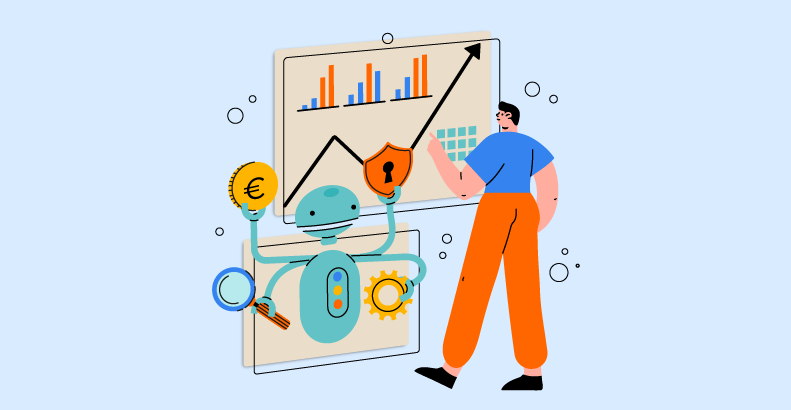Third-Party Software Security: Managing Risks with Testing Services

- October 6, 2023
- admin
In today’s fast-paced software development landscape, third-party software components and libraries play a pivotal role in accelerating time to market and reducing development effort. However, their integration introduces a critical concern: security risks. Third-party software can introduce vulnerabilities that may remain hidden until they are exploited, potentially leading to data breaches, system compromises, and financial losses. To address these risks, organizations turn to Third-Party Software Security Testing Services, a crucial component of a comprehensive security strategy. In this technical guide, we will explore the intricacies of managing third-party software security risks through testing services.
The Prevalence of Third-Party Software
Third-party software, including libraries, frameworks, and components, has become ubiquitous in modern software development. It offers several advantages, such as:
Rapid Development
Leveraging third-party solutions accelerates development by reducing the need for in-house development of common functionalities.
Feature Enrichment
Third-party libraries often provide specialized features and capabilities that enhance the functionality of applications.
Maintenance Ease
By relying on well-maintained third-party components, organizations can reduce the burden of maintaining and updating software components.
However, the integration of third-party software also introduces security challenges, as organizations may have limited visibility and control over the security of these components.
The Third-Party Software Security Challenge
While third-party software can expedite development, it carries inherent security risks that
organizations must address:
Vulnerabilities
Third-party components may contain vulnerabilities that can be exploited by attackers. These vulnerabilities can range from known issues to undiscovered flaws.
Data Exposure
Insecure third-party components can potentially expose sensitive data, leading to data breaches and compliance violations.
Compliance Issues
Organizations may be subject to regulatory requirements that mandate the assessment and management of third-party software security risks.
Dependency Chains
The use of third-party software often leads to complex dependency chains, making it challenging to track and manage security issues.
The Role of Third-Party Software Security Testing Services
To mitigate third-party software security risks effectively, organizations employ Third-Party Software Security Testing Services. These services encompass a range of methodologies and tools designed to assess the security posture of third-party components. The primary objectives of these services include:
Identification of Vulnerabilities
Detecting and cataloging vulnerabilities within third-party software components.
Assessment of Security Controls
Evaluating the effectiveness of security controls implemented by third-party components.
Risk Prioritization
Prioritizing security risks based on their severity, impact, and exploitability.
Recommendation of Remediation
Providing actionable recommendations for mitigating identified security issues.
Key Methodologies in Third-Party Software Security Testing
Several methodologies are commonly employed in Third-Party Software Security Testing to comprehensively assess third-party components. These methodologies help organizations identify vulnerabilities and assess the security posture of their software supply chain. Here are some of the key methodologies:
1. Static Analysis
Static analysis, often referred to as Static Application Security Testing (SAST), involves the examination of the source code, binaries, or bytecode of third-party components without executing them. Key aspects of static analysis include:
Code Scanning
Automated tools scan the codebase for known security vulnerabilities, coding errors, and code quality issues.
Dependency Analysis
Identifying and analyzing third-party dependencies and their security implications.
Code Review
Manual code review by security experts to identify complex vulnerabilities and logical flaws.
2. Dynamic Analysis
Dynamic analysis, or Dynamic Application Security Testing (DAST), involves the examination of third party components while they are executing within their runtime environment. Key aspects of dynamic analysis include:
Web Application Scanning
Assessing web applications for common vulnerabilities like SQL injection, cross-site scripting (XSS), and CSRF.
Runtime Monitoring
Monitoring third-party component behavior during execution to identify security issues in real-time.
Traffic Analysis
Analyzing network traffic generated by third-party components for signs of vulnerabilities or malicious behavior.
3. Interactive Analysis
Interactive Analysis, also known as Interactive Application Security Testing (IAST), combines elements of both static and dynamic analysis. It examines the third-party component’s source code and behavior during runtime. Key aspects of interactive analysis include:
Real-Time Feedback
Providing real-time feedback on vulnerabilities detected in running applications.
Code Instrumentation
Adding security sensors to the code to monitor and analyze its behavior in a dynamic context.
Reduced False Positives
Minimizing false positives by analyzing code execution in context.
4. Software Composition Analysis (SCA)
Software Composition Analysis focuses on identifying and managing the third-party software
components used within an application. Key aspects of SCA include:
Component Inventory
Creating an inventory of all third-party components and their versions used in the application.
Vulnerability Scanning
Identifying known vulnerabilities associated with the components in use.
License Compliance
Ensuring that third-party components adhere to licensing agreements.
Third-party software components offer significant advantages in terms of accelerated development and enriched functionality. However, they also introduce security risks that organizations must diligently manage. Third-Party Software Security Testing Services are a crucial part of this management strategy, enabling organizations to identify vulnerabilities, assess security controls, and prioritize risk mitigation efforts.
By employing a combination of static analysis, dynamic analysis, interactive analysis, and software composition analysis, organizations can comprehensively evaluate the security posture of third-party components. Adherence to best practices, integration with the CI/CD pipeline, and continuous monitoring ensure that security assessments remain proactive and effective.
In a digital landscape characterized by evolving threats, securing third-party software components is not merely a best practice; it is a necessity for safeguarding data, protecting systems, and maintaining the trust of users and stakeholders.











